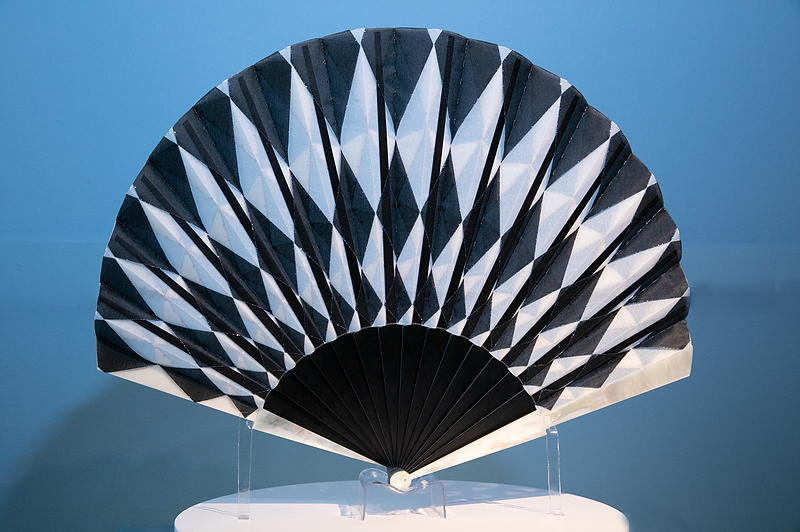The FIDM Museum Deco Fan
The FIDM Museum was thrilled to acquire an original fan by master fan-maker Sylvain Le Guen, commissioned to accompany a contemporary gown with an Art Deco motif in our collection. Associate Curator Christina Johnson walks us through the process of how this fan came to fruition, from commission to creation.
****************************************************************************************************************
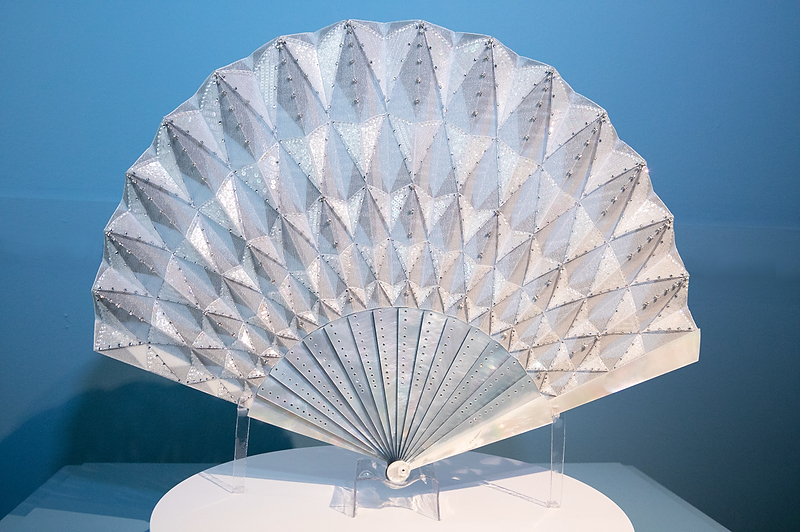 The FIDM Museum Deco Fan. Commissioned 2019. Commissioned Gift of Mona Lee Nesseth, 2019.5.78AB
The FIDM Museum Deco Fan. Commissioned 2019. Commissioned Gift of Mona Lee Nesseth, 2019.5.78AB
It isn’t every day that a museum has the opportunity to commission a couture-quality fan, but thanks to the generosity of Mona Lee Nesseth, the FIDM Museum recently did just that! Created by Maître d’art Éventailliste Sylvain Le Guen, the FIDM Museum “Deco” fan beautifully represents a cultural tradition of French fan artistry merged with a contemporary approach to fashion aesthetics.
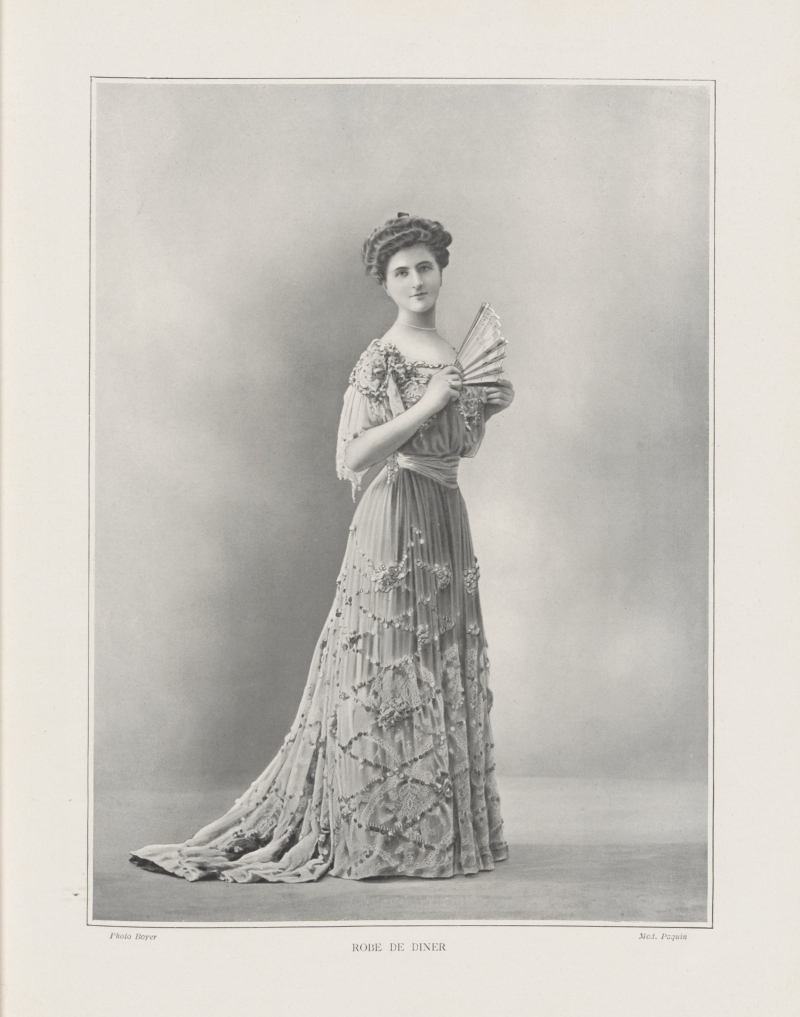 Le Figaro Modes, January 15, 1903. Bibliothèque nationale de France
Le Figaro Modes, January 15, 1903. Bibliothèque nationale de France
For centuries in France, upper class women had the luxury to request an éventailliste (fan-maker) design and fabricate fans to compliment their latest made-to-measure gowns. They also purchased precious contemporary and historic collectible fans at high-end shops, such as Maison Duvelleroy (founded 1827). Fans were an integral part of a fashionable wardrobe: precious objects held in hand that served to highlight an owner’s taste, financial status, and keen understanding of appropriate social deportment.
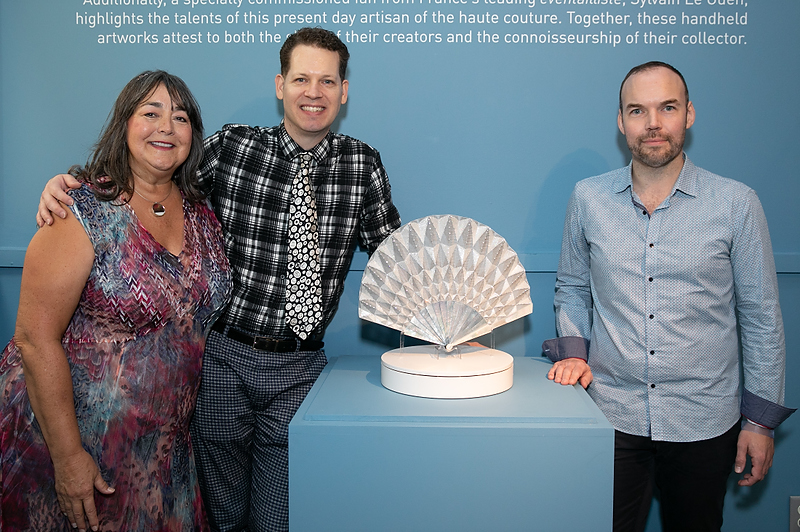 Donor Mona Lee Nesseth, Curator Kevin Jones, and Fan-Maker Sylvain Le Guen at the FIDM Museum Fashion Council Fall Lecture Day, October 26, 2019
Donor Mona Lee Nesseth, Curator Kevin Jones, and Fan-Maker Sylvain Le Guen at the FIDM Museum Fashion Council Fall Lecture Day, October 26, 2019
Judging from a lack of representation in fashion magazines, hand fans seemingly went out of style during the mid-twentieth century. Their more recent resurgence has been led in part by fan-maker Sylvain Le Guen. Sylvain has held a life-long interest in fan history and construction.[1] He describes a “magical moment” in childhood of seeing a display of fans on a neighbor’s mantle, and how he was instantly intrigued by the pictures that disappeared and reappeared when folded and unfolded. Sylvain constructed his first fan when he was only ten years old. It was carved of wood from a commercial fruit crate, and was based on a Chinese example he had seen at a local market.
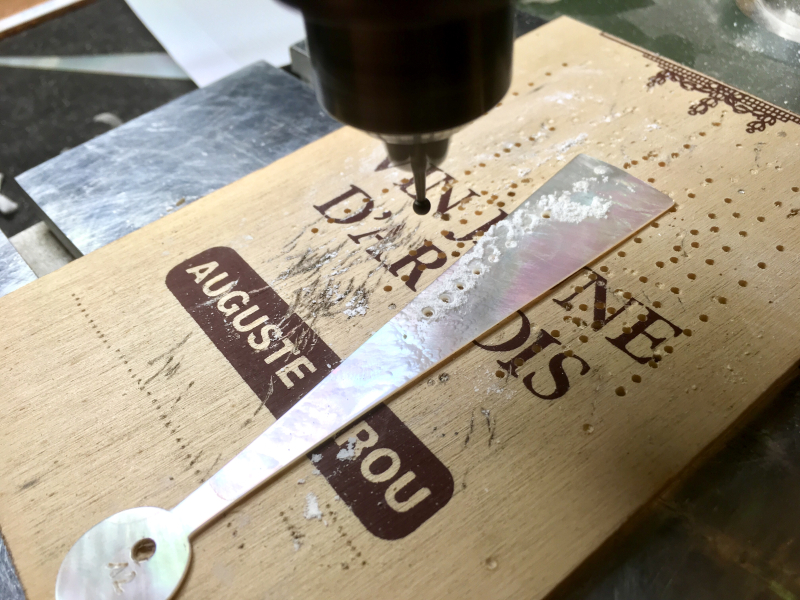 Deco fan sticks being drilled. Photo courtesy Sylvain Le Guen
Deco fan sticks being drilled. Photo courtesy Sylvain Le Guen
Sylvain also sought out historic texts on fan-making as a youngster, such as the plates and descriptions in Diderot’s famed Encyclopédie. Today, he is still intrigued with renewing traditional techniques. He utilizes dead stock tools and materials, even upcycling elements like mother-of-pearl, wood, and lace from damaged fans of the nineteenth century. The image above shows the hand-cut mother-of-pearl elements that will be drilled through with antique machinery to create one of the sticks on the Museum's Deco fan.
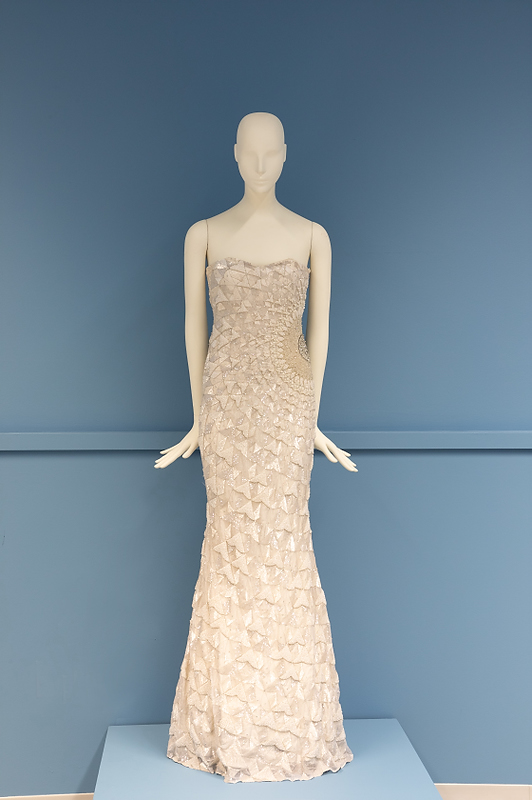
Evening Gown, Designer: Lorena Sarbu, c. 2010. Gift of Mona Lee Nesseth, 2018.975.4
The Maison Sylvan Le Guen specializes in custom-designed fans for private clients. In this case, the clients were patron Mona Lee Nesseth and the FIDM Museum. Generally, Sylvain gains inspiration for his pieces by asking patrons to send him photos of things they love. In keeping with the tradition of fans made to compliment women’s wardrobes, we sent photos of a newly acquired evening gown dating to circa 2010 by Los Angeles-based red carpet designer Lorena Sarbu. The gown is embroidered in triangular arrangements of white and silver sequins and beads that radiate out from one side of the torso. This dense geometric beading pattern gave us the title "Deco Fan," as it hearkens back to an embroidery format typically seen on mid-1920s evening dresses. Sylvain agreed that the gown could inspire a show-stopping fan. After he studied the images and gave thought to possible designs, Mona flew to Paris to see prototypes for our piece and to discuss the commission.
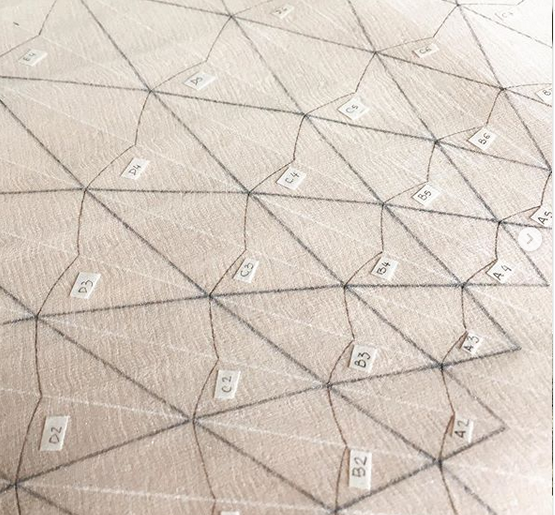
Fan motif being plotted. Photo courtesy Sylvain Le Guen
Sylvain emailed us photos of the multi-layered fan while it was being made, and it was fascinating to follow his working process. Well-thought-out project organization was just as important as determining the final design features and attaining an impeccable level of craftsmanship. A to-scale template was created, and each individual embroidery element was plotted and numbered on the fan base fabric. The finished commission would feature different sizes of hand-applied, shimmering sequins, as well as polished and crushed mica to play with gossamer light refractions.
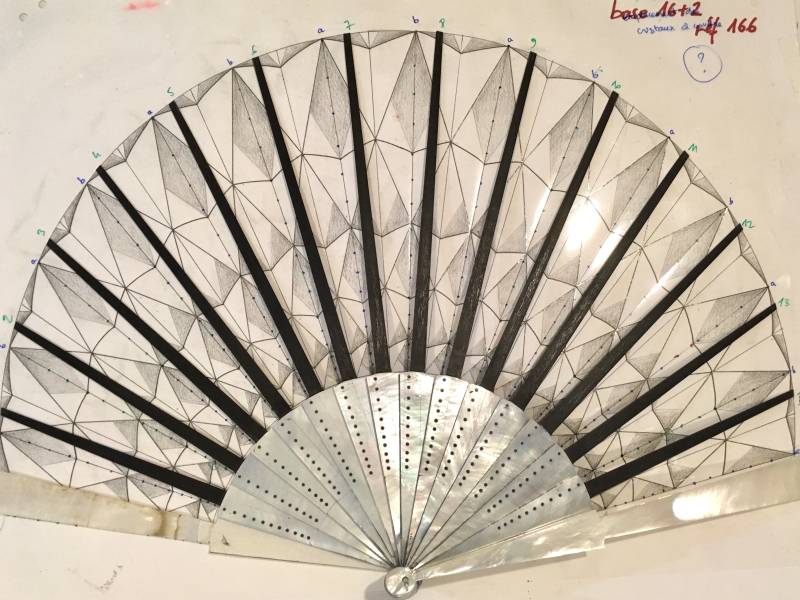 Sticks arranged against pattern. Photo courtesy Sylvain Le Guen
Sticks arranged against pattern. Photo courtesy Sylvain Le Guen
Detailed patterns were also used to ensure exactitude of the differing fan elements; in the photo above, the overall measurements and cut angles of the sticks and ribs are set against a drawing of the leaf. The radiating dots in this image represent the tiny crystals that were applied after the base embroidery was complete. Commissioning objects for the FIDM Museum is an amazing experience—the beautiful piece Sylvain created will be preserved in our collection for future generations to study and appreciate. It's also an important opportunity to record the design process, understand the maker’s creative choices, and honor the hours of craftsmanship represented in objects such as the Deco Fan. Thank you to the Fan Association of North America (FANA). The group provided generous support for the conservation of select fans and mounts for FANtasy: The Mona Lee Nesseth Fan Collection at he FIDM Museum. [1] Much of the information from this blog post derives from Sylvain Le Guen’s lecture hosted by FIDM Museum Fashion Council, October 26, 2019.
